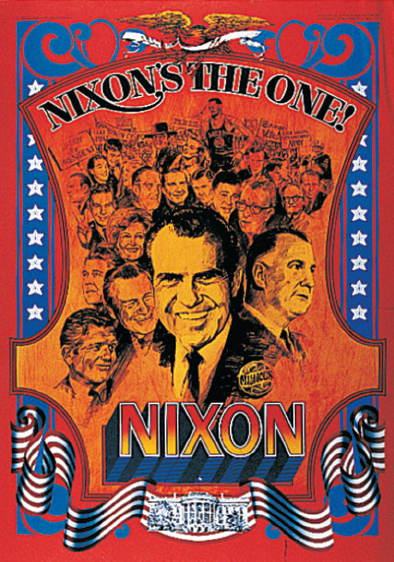How did liberalism fare under President Nixon?
Printed Page 861

Figure false: Poster for Nixon’s 1968 Campaign
Figure false: Seeking the presidency in 1968 — a turbulent year for protests, riots, and assassinations — Richard Nixon tried to appeal to a broad spectrum of voters, reflected in this campaign poster. While his slogan “Champion of the Forgotten America” spoke to white Americans alienated by the Great Society’s programs for minorities and the poor, the appearance on the poster of the black Republican senator Edward Brooke and basketball player Wilt Chamberlain of the Los Angeles Lakers gave a nod to African Americans. Collection of Janice L. and David J. Frent.
OPPOSITION TO CIVIL RIGHTS MEASURES, Great Society reforms, and protest groups — along with frustrations over the war in Vietnam (as discussed in chapter 29) — delivered the White House to Republican Richard M. Nixon in 1968. Nixon attacked the Great Society for “pouring billions of dollars into programs that have failed” and promised to represent the “forgotten Americans, the non-shouters, the non-demonstrators.” Yet his administration either promoted or accepted important elements of the liberal reform agenda, such as greater federal assistance to the poor and environmental reforms.
CHRONOLOGY
1968
- – Richard M. Nixon is elected president.
1970
- – Environmental Protection Agency is established.
- – Clean Air Act.